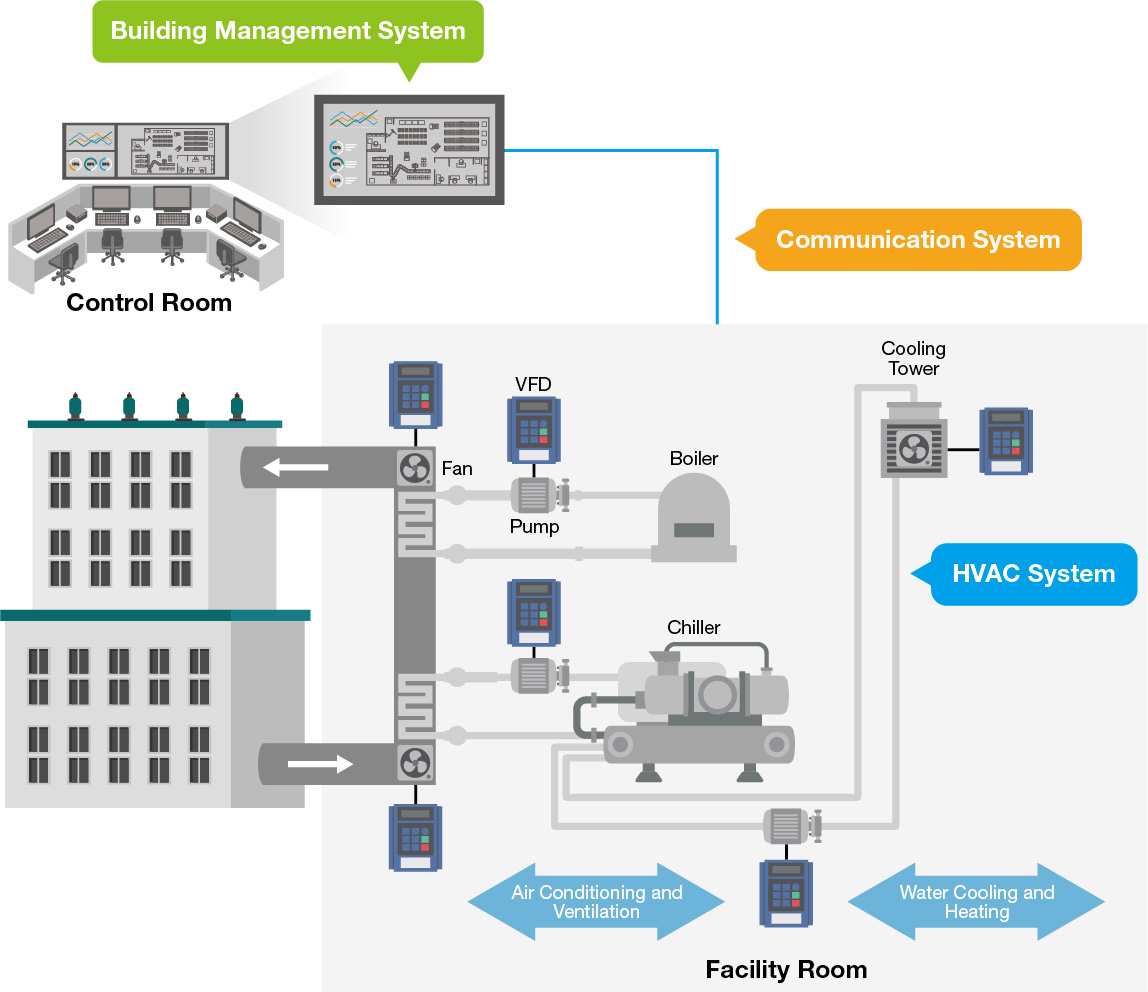HVAC (heating, ventilation, and air conditioning) systems play an important role in the everyday operation of commercial and industrial buildings. They ensure comfortable temperatures and good air quality for occupants, as well as appropriate climate control for merchandise. But how do you know if your HVAC system is operating normally and whether it is running optimally to save energy and money? Remote monitoring systems that allow facility managers to visualize the status of various HVAC equipment and environmental parameters can help prevent potential system failures and improve operating efficiency.
HVAC equipment is usually controlled by a building management system (BMS) or building automation system (BAS). Various sub-systems go into a BMS. The mechanical system is where the actual physical operations of the building take place. These operations include cooling, pumping, and ventilation, involving many pieces of mechanical equipment. The electrical system, as the name suggests, involves electrical and power equipment, such as transformers, panels, generators, and uninterrupted power supplies (UPS). Along with boilers, generators, heat pumps, fans, chillers, and pumping units, all these critical sub-systems need to be monitored to detect any abnormal readings and alert building operators so that they can perform proactive maintenance.

Therefore, connectivity is the first and foremost step in developing a remote monitoring system for your HVAC system. To make the installation and operation of your connectivity solution hassle-free, keep the following considerations in mind:
Interoperability Made Easy
The purpose of a connectivity solution is to make remote field information available to building operators. The monitoring devices chosen must be able to retrieve data from numerous HVAC equipment and sensors that communicate through a variety of protocols, such as Modbus TCP or BACnet/IP. For equipment that does not have a communication interface to output status data, additional hard-wired sensors are needed to capture equipment data and environmental conditions. Environmental monitoring applications often require sensors to measure CO2 density, water pressure, airflow, temperature, and humidity. For equipment monitoring, vibration, power failure, and power consumption are also commonly measured in the field. Advanced sensors often come with networking interfaces that can directly connect to the main communication backbone. If such sensors are not available, then remote I/O units might be required.
Connectivity Solutions That Simplify Configuration and Troubleshooting
Depending on the project scope, an HVAC system might require a large number of monitoring devices. The larger the implementation scope, the more installation and configuration effort is required. Wiring is also something to consider when you are planning your monitoring network. Some features, such as Ethernet cascading, could go a long way in increasing installation efficiency.
Configuring monitoring devices one by one can be painstakingly slow if no user-friendly tools are available. Routine maintenance tasks, such as configuration backups or device firmware upgrades, are often time-consuming and cumbersome if performed manually. Therefore, when selecting connectivity devices to monitor your HVAC system, consider solutions that already come with easy-to-use configuration tools and troubleshooting utilities that can help you quickly pinpoint the cause of a communication problem and minimize downtime.
Pay Attention to Cybersecurity
Although enabling remote connectivity for all your devices allows you to benefit from the convenience of real-time information, it also exposes you to additional cybersecurity risks. Always make sure the selected devices come with basic built-in security features, such as password protection, secure network protocols, and data logging for events. Besides security on the device level, the system level should also be protected by firewalls and regular vulnerability scans to minimize potential risks.
As a leading expert in industrial connectivity, Moxa has helped customers around the world develop reliable communication for remote monitoring their HVAC systems. Download our case studies and see how other companies use Moxa’s solutions on real-world application scenarios.
Do you need help selecting connectivity or networking products for your project? Download our E-book and learn about the key criteria for choosing the right products for your needs.